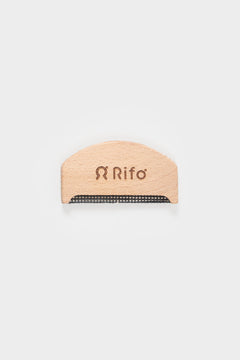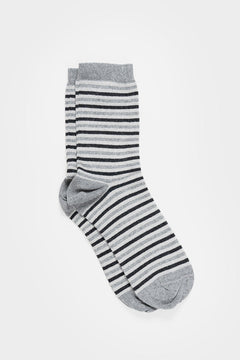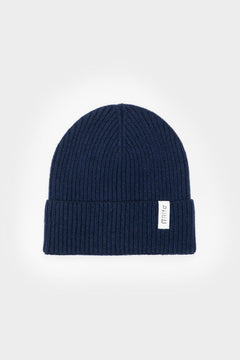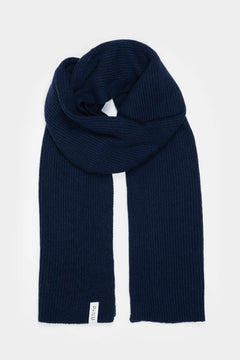One of the assumptions from which human civilization starts is that nature is at the service of humans, who exploit it and dispose of it. So it is with animals: cows offer us milk, poultry their meat, sheep their wool.
Someone will turn up their noses at this statement. In fact, shearing a sheep isn't exactly the same as killing an animal to eat it, right?
Vegan ethics really want to reverse the principle on which man has always based his work, stating that no sentient living being should be exploited for the interests of man, regardless of whether an animal is killed or not.
In this article we will therefore understand what are the vegan options regarding clothing and more specifically regarding knitting.
In a nutshell we will answer the question: is there a vegan wool? What is meant by this definition? How is cruelty free wool produced?
To write this article, we didnt' just collect a bit of information on the topic, but we asked an insider, Simone Scampoli, activist for the Animal Save Movement, an animal rights movement that through the years has seen the birth of the Climate Save Movement and Health Save Movement branches. This is because animal suffering is closely linked to environmental destruction and human health.

Let's take a step back and see what does virgin wool mean.
How virgin wool is collected
How is virgin wool collected? Very simple.
The hair is cut on the live sheep by using mechanical or hand shears, usually in the spring, when the hair is longer.
Shearing is also done on dead animals. In this case, wool is called tanning wool and has a much less valuable quality.
When the wool is extracted, it is put together in bales and sent to the wool mills which then proceed to its processing.
The suffering of shearing

Wool is derived from animals such as sheep and goats. Wool is a very profitable sector and this involves the sometimes intensive breeding of these animals.
Yes, because sheep only produce the wool they need to protect themselves from the climate. But the fashion industry requires a lot, much more.
And here the intensive farms come into play, which take care of selecting the sheep with the best genetic characteristics to transform them into wool-producing machines.
The sheep are therefore found to have a greater weight of wool in summer than they need to survive, and then suffer the cold in winter. When intensive breeding is done to make large numbers, the risk is also that these animals are injured by the shears, often reporting infections and suffering.
Although it must be said that it is not in the economic interest of the breeder to lose a head of cattle that can still produce a lot of material and consequently wealth, it is estimated that after shearing, more than one million sheep die every year.
And if you think this is not enough, you must also know that there is a technique, called mulesing, in which breeders remove parts of the animal's skin, usually without anesthesia and without painkillers, to prevent infections due to larvae and parasites.
A painful and cruel practice, particularly widespread in Australia, still in the name of the fashion market.
Vegan thinking: the words of an animal rights activist
It seemed natural to ask a person who has embraced vegan philosophy and who defends animal rights every day what he thinks of the world related to wool, if there is vegan wool and especially if regenerated wool can be a good, ecological and cruelty-free alternative:
Here is what activist Simone Scampoli replied:
How does a vegan view the purchase of virgin wool garments? Are there any distinctions to be made with virgin cashmere wool?
Have you ever heard of regenerated wool? Can it represent an alternative for vegan ethics?
Looking to the future, I see a vegan world, and the drastic increase in vegan products in the market is the answer. This is to say that the day will come when no more wool will be produced, therefore regenerating wool has its benefits but looking to the future we should invest in the creation of new ethical and natural materials to permanently replace wool.

Is there a vegan wool?
The conjunction of these two words, vegan wool, cannot exist. As specified above, the word vegan implies the abolition of any exploitation and therefore the exclusion of any material or product deriving from animals from our lives. Continuing to use the materials of other living beings would pass on the message that certain beings are on this Earth for us, as certain traditions and / or cultures tell us.
It's a bit like when the vegan diet is only used for health purposes. The word vegan implies ethics, you do not become vegan for health, in which case it is said that you follow a plant-based diet.
I would like to take this opportunity to recall the enormous suffering that lies behind the wool industry, which is closely linked to the production of meat and dairy products. If we put ourselves in the position of the animals victims of this massacre, I don't think they would like to see the name "wool" that characterizes their fur, associated with the word vegan. So it is right to call it regenerated wool, and not vegan.
So according to vegan ethics what is the best choice that satisfies the need to dress in the coldest periods, when cotton is not enough? Do you know innovative and bio-sustainable materials that meet these characteristics?
Unfortunately, those who have chosen to switch to a completely vegan lifestyle still have problems in this current world and often suffer discrimination in various aspects but many researchers are surprising us and are finding what we need.
Students from the University of the Andes in Bogotá, Colombia, have created * Woocoa ", a 100%" wool "made of a combination of hemp and coconut fibers treated with enzymes extracted from the Pleurotus mushroom. It is very versatile and suitable for be woven and dyed in a similar way to real wool. In recent years, designers and clothing manufacturers have also taken advantage of biotechnology to offer cruelty-free alternatives to fibers and animal-based materials: high-tech eco-fur and vegan leather goods. waste from the production of wine, from pineapple and apricots There are many studies on alternatives to the skin, there are also those who have tried to replace it with the processing of tree leaves.

What do you think of synthetic fibers, which although not derived from the exploitation of animals are produced from oil and therefore are particularly polluting? Do you think they are still a preferable choice according to vegan ethics?
In my opinion, vegan ethics should also exclude synthetic materials that involve environmental destruction. As mentioned above, the vegan population is still a minority, and it is not always possible to access eco-sustainable and cruelty-free products because the market does not favor them. It would therefore be great to see many more companies born that focus on recycling plastic to create synthetic garments. We know how much the world is submerged in plastic and maybe this could be a temporary solution during the transition to a world without plastic.

Vegan wool
Many stylists, fashion houses and researchers have sought a cruelty free alternative to wool.
Among them, some Colombian students who created Woocoa, a 100% natural vegetable fiber, made up of hemp and coconut fibers, which is currently the closest to the concept of vegan wool.
Manuel Ortiz, one of the Woocoa team members, explained the process that led to this surprising result:
In our research we found that in our country, Colombia, there are 114 different vegetable fibers commonly used in artisan products. Coconut fiber is a waste, a by-product of agriculture that could generate economic benefits for communities on the Caribbean coast of Colombia.
Hemp could be grown to restore value to those areas where there were illegal crops; areas that until the 2016 peace treaty have been at the center of internal conflict with the rebel group FARC.
Initially, the team was not satisfied with the results due to the hardness of the fabric coming out of the plant fibers.
Then, the lighting.
After consulting with the professors from the university's biology, chemical engineering and design departments they were attending, they found that using Pleurotus mushroom enzymes could degrade lignin, a content that makes plant cells stiff and hard to the touch.
And it was precisely this expedient that was able to transform the coconut and hemp fibers into a soft, very versatile fabric, which looks very much like wool and which can be woven and dyed like other textile fibers. Then, lighting.
All the work of Colombian researchers remains an experiment for the moment, this fiber has not yet been marketed and developed into a real product available on the market.
Conclusions
Vegan wool is not only a reality but it is above all an ethical choice to demonstrate to the world in which we live that we take care of these sensitive issues.
We at Rifò have also always fought to make the issues of eco-sustainability and the ethics of work processes become more known and taken to heart by everyone. Although it obviously derives originally from the exploitation of animals, we can say that our garments are, if not vegan, cruelty free, at least as far as the current state of affairs is concerned. Certain years of exploitation and torture on animals cannot be erased, but we are convinced that if the industry adopted the principles of the circular economy en masse in the wool sector, there would be no need for virgin wool: what we have collected today could be enough for centuries.
How to take the first step in this direction? Simple you can visit the page of our old clothes collection system and send us your old clothes: we will insert them in the regeneration circle.
If, on the other hand, you are interested in purchasing regenerated fiber garments, visit our online store: you will find a wide range of regenerated garments that are gentle both on your skin and with our planet.








